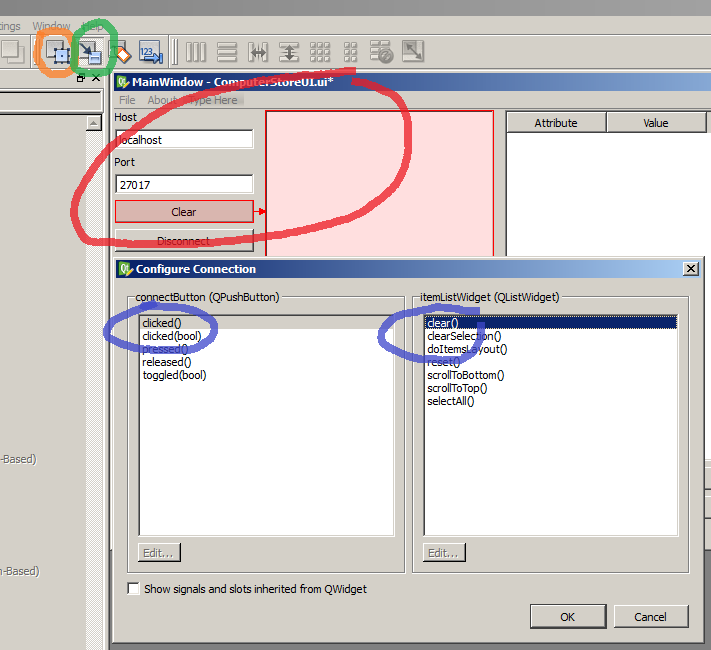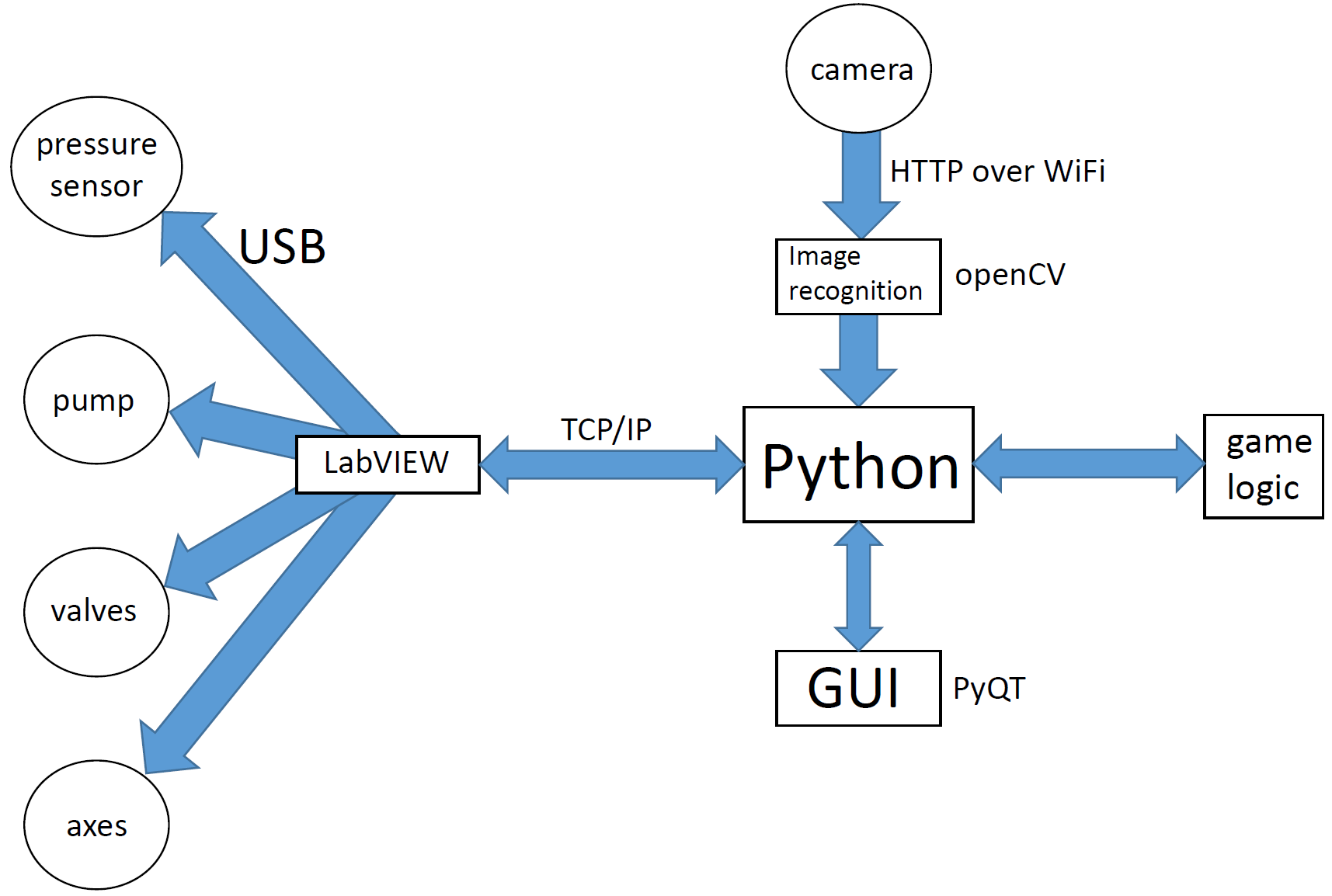Pyqt Designer Signals And Slots
- Pyqt Designer Signals And Slots Free
- Pyqt Qt Designer Signals And Slots Video
- Pyqt Designer Signals And Slots Real Money
- Pyqt Designer Signals And Slots Vegas World
- Pyqt Designer Signals And Slots Free Play
Signals and slots is a language construct introduced also in Qt[1] for communication between objects which makes it easy to implement the observer pattern while avoiding boilerplate code. The concept is that GUI widgets can send signals containing event information which can be received by other widgets / controls using special functions known as slots. This is similar to C/C++ function pointers, but signal/slot system ensures the type-correctness of callback arguments.[citation needed]
The signal/slot system fits well with the way graphical user interfaces are designed.[citation needed] Similarly, the signal/slot system can be used for other non-GUI usages, for example asynchronous I/O (including sockets, pipes, serial devices, etc.) event notification or to associate timeout events with appropriate object instances and methods or functions. It is easy to use and no registration/deregistration/invocation code need to be written, because Qt's metaobject compiler (MOC) automatically generates the needed infrastructure.
A commonly used metaphor[according to whom?] is a spreadsheet. A spreadsheet has cells that observe the source cell(s). When the source cell is changed, the dependent cells are updated from the event.
Alternative implementations[edit]
PyQt signals and slots example.py. GitHub Gist: instantly share code, notes, and snippets. PyQt uses a unique mechanism in event processing: signals and slots. Let’s learn about the connection between signals and slots using simple examples.
There are some implementations of signal/slot systems based on C++ templates, which don't require the extra metaobject compiler, as used by Qt, such as libsigc++, sigslot, vdk-signals, nano-signal-slot, neosigslot, Signals, boost.signals2, Synapse, Cpp::Events, Platinum and JBroadcaster. Common Language Infrastructure (CLI) languages such as C# also supports a similar construct although with a different terminology and syntax: events play the role of signals, and delegates are the slots. Another implementation of signals exists for ActionScript 3.0, inspired by C# events and signals/slots in Qt. Additionally, a delegate can be a local variable, much like a function pointer, while a slot in Qt must be a class member declared as such. The C based GObject system also provides similar functionality via GSignal.In D it is implemented by std.signals.
See also[edit]

Libraries[edit]
Java: sig4j - multi-threaded, type-safe, based on the FunctionalInterface annotation introduced in Java 8.
- Signals and slots are loosely coupled: A class which emits a signal neither knows nor cares which slots receive the signal. Qt's signals and slots mechanism ensures that if you connect a signal to a slot, the slot will be called with the signal's parameters at the right time. Signals and slots can take any number of arguments of any type.
- An introduction to creating PySide/PyQt signals and slots, using QObject. How signals and slots are useful, and what they can do when developing in PySide/PyQt.
C++: vdk-signals - thread-safe, type-safe, written in C++11 with atomic variables.
References[edit]
- ^'Signals & Slots - QtCore 5.1'. Qt Project. 2013-07-04. Retrieved 2013-07-04.
In Chapter 5 we created dialogs purely by writing code. In our initializers we created the widgets we needed and set their initial properties. Then we created one or more layout managers to which we added the widgets to get the appearance we wanted. In some cases, when working with vertical or horizontal layouts we added a 'stretch' which would expand to fill unwanted space. And after laying out the widgets we connected the signals we were interested in to the methods we wanted to handle them.
- Figure 7.1 Qt Designer

Some programmers prefer to do everything in code, whereas others prefer to use a visual design tool to create their dialogs. With PyQt, we can do either, or even both. The Image Changer application from the preceding chapter had two custom dialogs: the ResizeDlg, which was created purely in code (in the exercise), and the NewImageDlg, which was created using Qt Designer. We showed how to do things in code first so that you would get a strong sense of how the layout managers work. But in this chapter we are going to create dialogs using Qt Designer, which is shown in Figure 7.1.
Qt Designer can be used to create user interfaces for dialogs, custom widgets, and main windows. We will only cover dialogs; custom widgets are almost the same, only they are based on the 'Widget' template rather than one of the 'Dialog' templates. Using Qt Designer for main windows offers fewer advantages, apart from the convenience of a visual QAction editor. Qt Designer can also be used to create and edit resource files.
The user interfaces are stored in .ui files, and include details of a form's widgets and layouts. In addition, Qt Designer can be used to associate labels with Buddies their 'buddies', and to set the tab-order, that is, the order in which widgets get 143 « the keyboard focus when the user presses the Tab key. This can also be done in code with QWidget.setTabOrder(), but it is rarely necessary for hand-coded forms, since the default is the order of widget creation, which is usually what we want. Qt Designer can also be used to make signal-slot connections, but only between built-in signals and slots.
Once a user interface has been designed and saved in a .ui file, it must be converted into code before it can be used. This is done using the pyuic4 command-line program. For example:
C:pyqtchap07>pyuic4 -o ui_findandreplacedlg.py findandreplacedlg.ui
As mentioned in the previous chapter, we can use either mkpyqt.py or Make mk-
PyQt to run pyuic4 for us. However, generating a Python module (a .py file) Pyqt Py
from a .ui file is not enough to make the user interface usable.* Note that the Make generated code (in the ui_*.py files) should never be hand-edited because any PyQt changes will be overwritten the next time pyuic4 is run. sidebar
From the end-user's perspective, it makes no difference whether a dialog's ^ 207 user interface is hand-coded or created with Qt Designer. However, there is a significant difference in the implementation of a dialog's initializer, since we must create, lay out, and connect the dialog's widgets if hand coding, but only need to call a particular method to achieve the same thing with a dialog that uses a Qt Designer user interface.
One great benefit of using Qt Designer, in addition to the convenience of designing dialogs visually, is that if we change the design, we only have to regenerate the user interface module (using pyuic4 directly, or via mkpyqt.py or Make PyQt), and we do not need to change our code. The only time that we must change our code is if we add, delete, or rename widgets that we refer to in our code. This
*It is possible, though uncommon, to load and use the .ui file directly using PyQt4.uic.loadUi().
mkpyqt.py and Make PyQt
The mkpyqt.py console application and the Make PyQt (makepyqt.pyw) GUI application, are build programs that run PyQt's pyuic4, pyrcc4, pylupdate4, and lrelease programs for us. They both do exactly the same job, automatically using the correct command-line arguments to run PyQt's helper programs, and they both check timestamps to avoid doing unnecessary work.
Make PyQt
Pyqt Designer Signals And Slots Free
Path: C:pyqt converted chap06newimagedlg.ui to chap06ui_newimagedlg.py converted chap06resources.qrc to chap06qrc_resources.py converted chap07findandreplacedlg.ui to chap07ui_findandreplacedlg,py converted chap07ticketorderdlgl.ui to chap07ui_ticketorderdlgl.py converted chap07ticketorderdlg2.ui to chap07ui_ticketorderdlg2.py converted chap08addeditmoviedlg.ui to chap08ui_addeditmoviedlg,py converted chap08addeditmoviedlgx.ui to chap08ui_addeditmoviedlgx.py converted chap08addeditmoviedlg_ans.ui to chap08ui_addeditmoviedlg_ans.py converted chap08resources.qrc to chap08qrc_resources.py converted chap09findandreplacedlg.ui to chap09ui_findandreplacedlg,py converted chap09paymentdlg.ui to chap09ui_paymentdlg.py converted chap09resources.qrc to chap09qrc_resources.py converted chap09vehiderentaldlg.ui to chap09ui_vehiderentaldlg.py converted chapl2miteform.ui to chapl2ui_miteform.py converted chapl3resources.qrc to chapl3qrc_resources.py converted chapl5resources.qrc to chapl5qrc_resources.py converted chapl7newimagedlg.ui to chapl7ui_newimagedlg.py converted chapl7resources.qrc to chapl7qrc_resources.py updated chap 17imagechanger_fr. ts generated chap 17imagechanger_fr .qm
0 Recurse 0 Translate Q] Dry Run
Quit
Pyqt Qt Designer Signals And Slots Video
The build programs look for .ui files and run pyuic4 on them to produce files with the same name but prefixed with ui_ and with their extension changed to .py. Similarly, they look for .qrc files and run pyrcc4 on them to produce files with the same name but prefixed with qrc_, and again with their extension changed to .py.
For example, if we run mkpyqt.py in the chap06 directory, we get:
C:pyqtchap06>..mkpyqt.py ./newimagedlg.ui -> ./ui_newimagedlg.py ./resources.qrc -> ./qrc_resources.py
The same thing can be achieved by running Make PyQt: click the Path button to set the path to C:pyqtchap06, and then click the Build button. If we make any changes we can simply run mkpyqt.py again, or click Build if using Make PyQt, and any necessary updates will be made.
Both build programs can delete the generated files ready for a fresh build, and both can work recursively on entire directory trees using the -r option for mkpyqt.py or by checking the Recurse checkbox for Make PyQt. Run mkpyqt.py -h in a console for a summary of its options. The Make PyQt program has tooltips for its checkboxes and buttons. In some cases, it may be necessary to set the tool paths; click More^Tool paths, on the first use.
means that using Qt Designer is much quicker and easier for experimenting with designs than editing hand-coded layouts, and helps maintain a separation between the visual design created using Qt Designer, and the behavior implemented in code.
Pyqt Designer Signals And Slots Real Money
In this chapter we will create an example dialog, using it to learn how to use Qt Designer to create and lay out widgets, to set buddies and tab order, and to make signal-slot connections. We will also see how to use the user interface modules generated by pyuic4, and how to create connections to our custom slots automatically without having to use connect() calls in the initializer.
For the examples, we have used the Qt Designer that comes with Qt 4.2. Earlier versions of Qt Designer do not have the QFontComboBox or QCalendarWidget widgets, and their 'Dialog' templates use QPushButtons rather than a QDialogBut-tonBox.
Pyqt Designer Signals And Slots Vegas World

Pyqt Designer Signals And Slots Free Play
Was this article helpful?